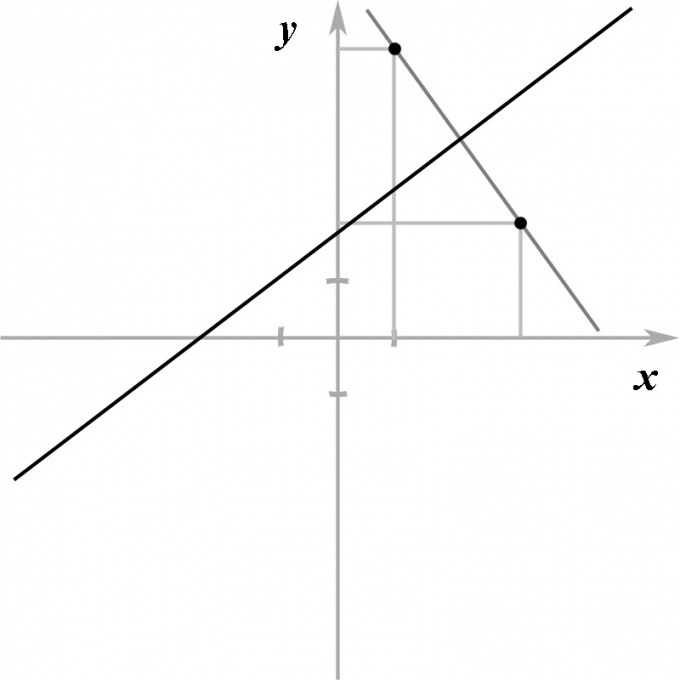Instruction
1
Clearly, both point — set and desired — must be collinear, and this line must be perpendicular to this. Thus, the first part of the problem is to find the equation of the line which would be perpendicular to some given line and passes through the given point.
2
Video can be set in two ways. The canonical equation of a line is: Ax + By + C = 0 where A, B, and C are constants. Direct can be defined using a linear function: y = kx + b, where k is angular coefficient, b is the offset.
These two methods are interchangeable, and any one can move on to another. If Ax + By + C = 0, then y = - (Ax + C)/B. in Other words, the linear function y = kx + b the slope k = -A/B, and offset b = -C/B. For given tasks easier to argue, based on the canonical equations of a straight line.
These two methods are interchangeable, and any one can move on to another. If Ax + By + C = 0, then y = - (Ax + C)/B. in Other words, the linear function y = kx + b the slope k = -A/B, and offset b = -C/B. For given tasks easier to argue, based on the canonical equations of a straight line.
3
If two lines are perpendicular to each other, and the first direct equation Ax + By + C = 0, the second equation should look straight Bx - Ay + D = 0 where D is a constant. To find a specific value of D, need to know which point is perpendicular to a straight line. In this case the point (x0, y0).
Therefore, D must satisfy the equation: Bx0 - Ay0 + D = 0, that is D = Ay0 - Bx0.
Therefore, D must satisfy the equation: Bx0 - Ay0 + D = 0, that is D = Ay0 - Bx0.
4
After perpendicular line is found, it is necessary to calculate the coordinates of the point of intersection with this. This requires to solve a system of linear equations:
Ax + By + C = 0
Bx - Ay + Ay0 - Bx0 = 0.
Her decision to give the number of (x1, y1) which are the coordinates of the point of intersection of lines.
Ax + By + C = 0
Bx - Ay + Ay0 - Bx0 = 0.
Her decision to give the number of (x1, y1) which are the coordinates of the point of intersection of lines.
5
The desired point must lie on the direct, and its distance to the point of intersection must equal the distance from the intersection point to the point (x0, y0). The coordinates of the point symmetric to the point (x0, y0), it is possible, therefore, to find, solving the system of equations:
Bx - Ay + Ay0 - Bx0 = 0,
√((x1 - x0)^2 + (y1 - y0)^2 = √((x - x1)^2 + (y - y1)^2).
Bx - Ay + Ay0 - Bx0 = 0,
√((x1 - x0)^2 + (y1 - y0)^2 = √((x - x1)^2 + (y - y1)^2).
6
But there is a simpler way. If the point (x0, y0) and (x, y) are at equal distances from point (x1, y1), and all three points are collinear, then:
x - x1 = x1 - x0,
y - y1 = y1 - y0.
Consequently x = 2x1 - x0, y = 2y1 - y0. Substituting these values into the second equation of the first system and simplifying expressions, it is easily seen that the right part becomes identical to the left. Additionally take into account the first equation it makes no sense, since it is known that the point (x0, y0) and (x1, y1) satisfy him, and the point (x, y) obviously lies on the same straight line.
x - x1 = x1 - x0,
y - y1 = y1 - y0.
Consequently x = 2x1 - x0, y = 2y1 - y0. Substituting these values into the second equation of the first system and simplifying expressions, it is easily seen that the right part becomes identical to the left. Additionally take into account the first equation it makes no sense, since it is known that the point (x0, y0) and (x1, y1) satisfy him, and the point (x, y) obviously lies on the same straight line.
